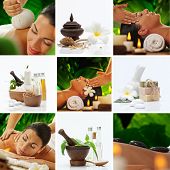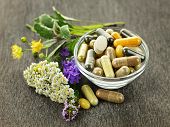Different types of baths that promote good health – The indications, procedure and duration time of these different bath types have been described for effective treatment of various illnesses
Different types of baths that promote good health !
Whirlpool bath
The whirlpool bath combines the thermal stimulus of the water with further mechanical stimuli. One way in which this occurs is with the aid of a rotating propeller, which moves the water.
In addition, warm air is injected into the water through a small nozzle. Depending on its size, the whirlpool bath can be used either as a partial bath for the lower legs or the arms, or as a full bath for the entire body.
The whirlpool bath should not be compared to the underwater massage, as the mechanical component is weaker. One of the outstanding therapeutic uses of whirlpool is to relieve muscle soreness and fatigue.
This is the reason many athletes and dancers purchase portable whirlpool for their baths, or go swimming in a pool with such whirlpool action. Whirlpool baths are helpful in anti-pain therapy.
Indications: Injuries, rheumatic disabilities, including rheumatic muscle and joint disorders, muscle soreness, fatigue, raynaud’s disease, tennis elbow, knee joint problems, swollen joints of arthritis, to improve the circulation of paraplegic and polio victims.
Whirlpool therapy can help with circulation problems and it is a well-known aid in relieving chronic pain and the phantom pain that occurs after amputations.
It will also help to heal skin sores and infected wounds, reduce the swelling of chronic oedema(tissue swelling), help reduce the pain of minor frostbite, ease scar tissue from burns, and help with weak and painful feet.
Many physiotherapists prepare their patients for therapy massage by first giving them a stimulating and relaxing whirlpool bath
Contra-indications: Sensitive to very hot water, diabetes, varicose veins, advanced arteriosclerosis or any advanced vascular limb problem
Procedure: Assist patient into tub. Start the whirlpool bath at a neutral temperature, and raise to the tolerance of the patient. Allow patient to relax in tub.
Assist patient from tub. If you are following the whirlpool with a massage, wrap the entire body so that it stays completely warm
Duration: 15 to 45 minutes, depending on the purpose for which it is being used.
Mineral, Herbal and Essential Oil Bath
There are many herbal and pharmaceutical substances that can be added to baths to produce special effects.
Water by itself has a remarkable, almost magical ability to alter the body state. Depending on the specific need, water will decrease or increase muscle tone, reduce pain, or generate energy.
The addition of certain herbal and pharmaceutical substances to the water is a twin present to the body. Some herbs soothe, others sedate or stimulate, and others soften the skin.
Most important is the ability of some substances to hasten perspiration or to stimulate release of stored toxins from within the body. This ability helps to overcome many symptoms and can improve a chronic condition.
Fango (Mud) Salicylic Powder Bath
This bath is the ultimate. It is the favourite fragrant mud bath in European spa Kur therapy centers.
It soothing effects are due to the combination of the analgesic properties of the volcanic ash powder (fango) and the pine needle essential oil.
Indications: Rheumatism in muscles and joints, sciatica, neuritis, degenerative non-inflammatory arthritis, lumbago.
Effects: Stimulates circulation, replaces minerals, exfoliates the skin.
Equipment: Bathtub, shower, towels, fango (mud) salicylate powder ( ingredients: salicylate powder, natrium humat, pine needle extract).
Procedure: Dissolve the powder in hot water, Assist patient into bath, and allow to soak for 10 to 20 minutes. Assist patient from bath and into a cool shower.
Wrap patient from bath and into a cool shower. Wrap patient in warm blanket and allow to rest.
Whey (High Protein Milk Serum) Bath
Whey is a high – protein milk serum. Liquid cow’s milk has about 6.25 percent protein; of that, 80 percent is contained in whey.
Traditionally, the term whey protein describes those milk proteins that remain after the cheese – making process uses up the casein molecules.
Earlier, whey was fed to young livestock on the farm because of its nutritional value.
Whey is a complete protein containing all the essential and non – essential amino acids found in nature. Today it is Europe’s foremost skin care bath product.
It is also called ‘lacto – med – derm bath’ (lacto meaning produced from milk, med meaning medically tested, and derm for skin friendly).
Indications: Particularly useful for aging and dry skin, neurodermatitis, psoriasis, acne, eczema, body rash, fungus, sunburn, and other skin ailments.
Equipment: Bathtub, towel, washcloth, whey bath powder (ingredients: lactose, milk fat, milk protein, graham salt, magnesium carbonate, wintergreen essential oil).
Procedure for bath: Patient should be encouraged to bathe in the whey bath at least three times per week. Fill tub two – thirds full with warm water, 95°F. Assist patient into bath. Allow patient to soak 10 to 20 minutes.
Procedure for mask: The whey powder can also be used as a mask on the face, hands, and feet. Assure powder to a wet, warm washcloth. Apply washcloth to patient’s skin (face, hands, and /or feet). Remove after ten to fifteen minutes.
The other different types of baths that promote good health include the following:
Mud Natrium Powder Bath
The fango (mud) natrium powder bath, used in spas worldwide, is a mineral-rich volcanic ash extract.
This ancient beauty rituals effective for removing impurities and smoothing the texture of the skin so it can readily absorb moisture and minerals.
Fango (mud) natrium powder is biologically pure, bacteria free, unscented and fully dissolves in bath water. It will not stain the tub or body.
Indications: Tired muscles
Effects: Will detoxify and revitalize the body.
Equipment: Bathtub, shower, towels, fango (mud) natrium powder (ingredients: 100% unscented natrium humat volcanic ash extract)
Procedure: Fill bathtub two – thirds full. Dissolve powder into bath. Assist patient into tub and allow to soak for 10 to 20 minutes.
For a real spa kur treatment, let the patient shower with cool or cold water after the bath. Patient should then rest, while warmly wrapped for 10 to 20 minutes.
Mustard Powder Bath
The great healing virtues of mustard have been extolled by numerous civilization for thousands of years. The Greeks, including Hippocrates, the Romans, the early American settlers, and Native American all used mustard for medicinal purposes.
The most universally known use of mustard is in a mustard plaster, recommended for common congestions of lung. Traditionally mustard is used for its stimulating, cleansing, and rejuvenating qualities.
The warmth of the mustard assists in opening pores, helping the body to sweat out impurities. The powder can be blended with essential oils of wintergreen ( antiseptic astringent), eucalyptus (antiseptic balsamic, cooling), rosemary (calming, soothing skin tonic) and thyme (antiseptic, stimulant).
These natural oils leave your skin feeling soothing and refreshed.
Indications: Fatigue, muscle and joint soreness, insomnia .
Equipment: Bathtub, shower, towels, mustard powder (ingredients: powdered mustard seed, essential oils of winter – green, eucalyptus, rosemary, thyme, sodium carbonate)
Procedure: Fill a tub two- thirds full with warm –hot water. Dissolve two large tbsps of the powder into the bath. Assist patient into bath, where he or she should soak for 15 to 20 minutes.
Assist patient out of the bath and into a cool shower, keep the shower brief. Allow patient to rest, wrapped in a warm blanket.
Seaweed Powder Bath
Deep freezing and drying the seaweed (by lyophilization) conserves the product’s natural qualities in a way no other method can. It conserves mineral salts, vitamins, enzymes, and the aroma.
Effects: Stimulates blood circulation, helps eliminate toxins, aids in toning the skin, restores mineral salts and trace elements.
Equipment: Bathtub, shower, towels, seaweed powder.
Procedure: Prepare the bath by adding two ounces of seaweed powder to 40 to 50 gallons (150-200 liters) of warm water, 102°F. Assist patient into bath, and ensure his or her comfort.
Place a cool damp towel on patient’s forehead. Allow patient to relax in the bath for 15 to 20 minutes, or longer, if patient is comfortable. Check on the patient every 10 minutes.
Provide patient with plenty of liquid to drink. A subsequent half-hour rest, with patient wrapped in a warm bathrobe or blanket, will increase effectiveness of bath.
The rest period prolongs perspiration and the consequent elimination of toxins. Follow with as cold a shower as possible.
The other different types of bath include bicarbonate Bath, Oxygen Bath, Underwater Pressure Massage bath, Steam Vapour Bath, Hot Steam Bath and Finnish Sauna.
RELATED TOPICS
Top 10 medical tourism destinations
Electrical hazards and safety measures
How does HIV spread in the body
Best hair transplant centers in Bangalore


